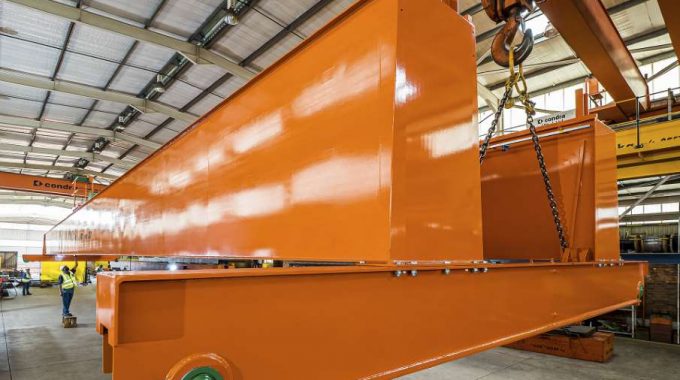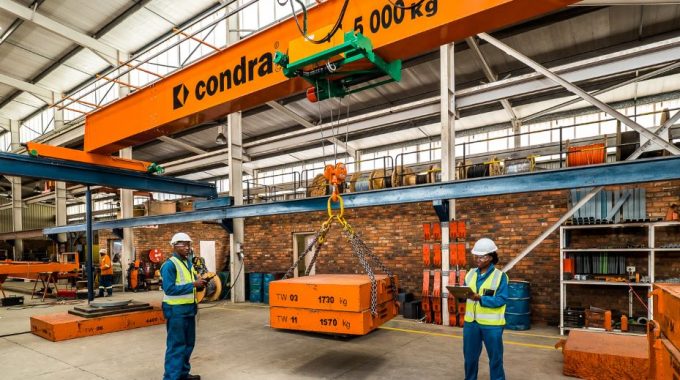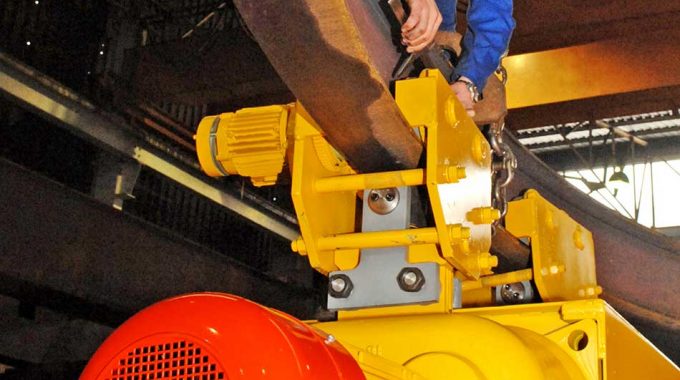HOOK-BLOCK THE STAR OF THIS OVERHEAD CRANE
The humble hook-block was recently elevated in status to become the key component of an electric overhead crane completed by Condra for a metal refinery.
Custom designed to specification, the block comprised an electrically insulated square steel frame suspended horizontally from four rope pulleys at its corners, and fitted with five hooks to meet the requirements of three different applications.
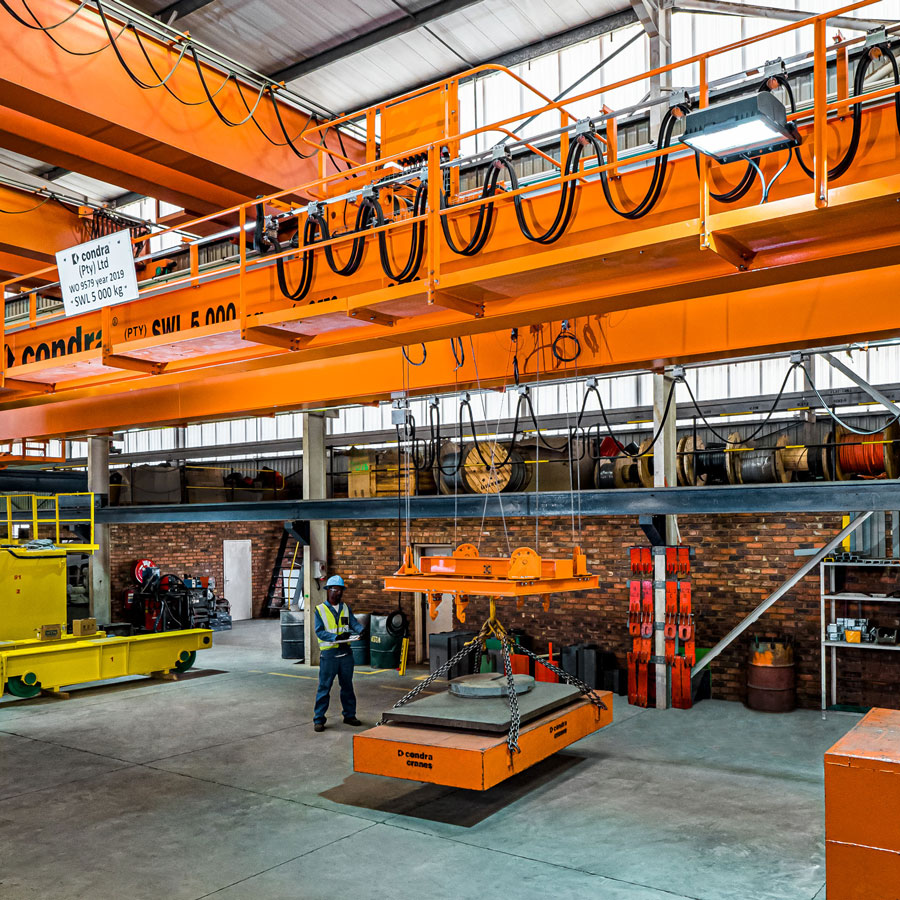 After installation and commissioning of the crane, four of the five hooks will carry out the primary function of removing racks of cathodic plates from acid baths used in the refining process.
These identical hooks are bolted two to each side of the steel frame to steady the racks while the crane carries them to stacking areas ready for despatch. Steadying of the racks will allow faster crane movement and increased productivity.
After installation and commissioning of the crane, four of the five hooks will carry out the primary function of removing racks of cathodic plates from acid baths used in the refining process.
These identical hooks are bolted two to each side of the steel frame to steady the racks while the crane carries them to stacking areas ready for despatch. Steadying of the racks will allow faster crane movement and increased productivity.
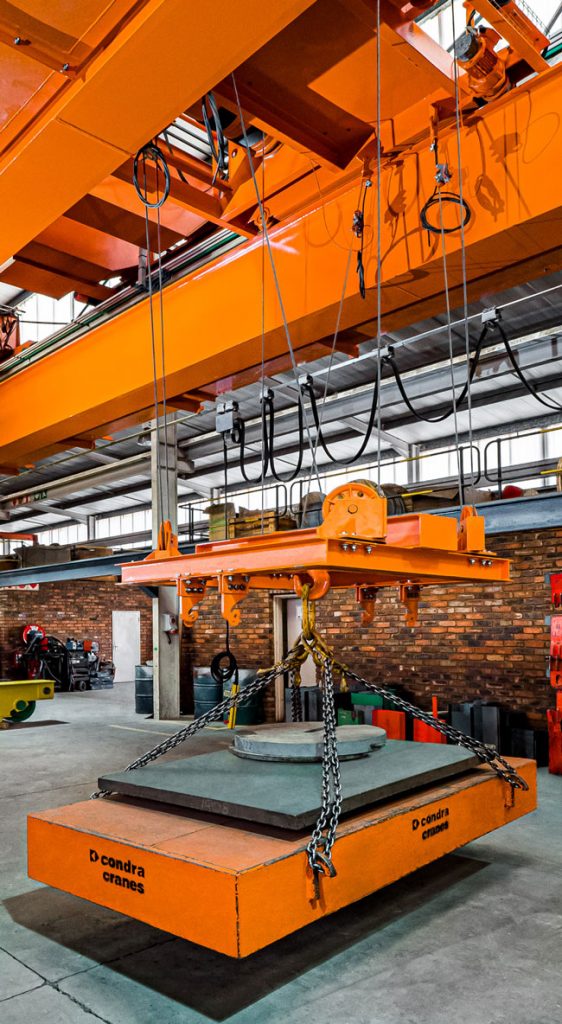 The fifth hook, of conventional swivel design, is mounted centrally in the block to execute the crane’s secondary function of loading the plates onto trucks.
Routine plant maintenance, the third of the crane’s functions, will also be carried out by this fifth hook.
The rubber matting which can be seen at the pulley mounting points between the four pulleys and the square steel frame (photograph C) provides electrical insulation for the crane to protect its motors from the charge applied to the acid baths.
Condra routinely supplies custom-manufactured crane components and complete cranes to customers worldwide.
The fifth hook, of conventional swivel design, is mounted centrally in the block to execute the crane’s secondary function of loading the plates onto trucks.
Routine plant maintenance, the third of the crane’s functions, will also be carried out by this fifth hook.
The rubber matting which can be seen at the pulley mounting points between the four pulleys and the square steel frame (photograph C) provides electrical insulation for the crane to protect its motors from the charge applied to the acid baths.
Condra routinely supplies custom-manufactured crane components and complete cranes to customers worldwide.
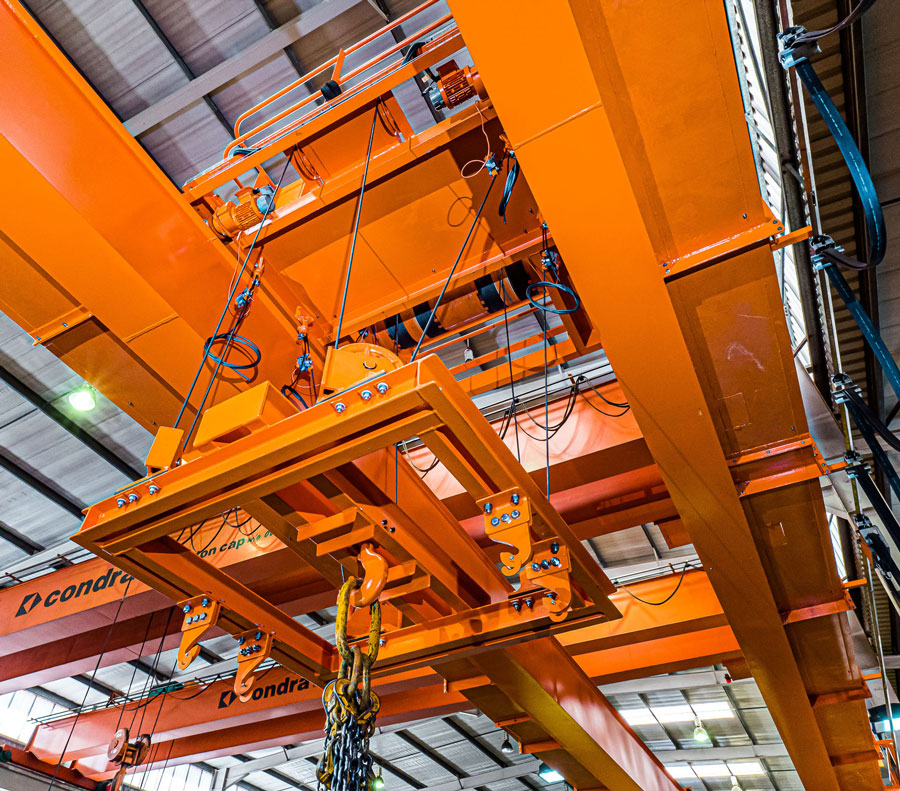 This particular machine was shipped in the third week of September.
This particular machine was shipped in the third week of September.

A. Overhead crane and hook-block undergoing load test prior to shipping.

B. A closer look at the hook-block. The five hooks and four pulleys are clearly seen in this photograph.

C. View from below the hook-block. In this shot can be seen the rubber insulation (black) in the pulley mounting points, used to insulate the crane from electrical current passing through the acid baths.
